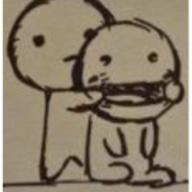How to draw the answer (major product) as shown below?
圖片參考:http://i453.photobucket.com/albums/qq252/tomchan1216/Organicchem1.jpg
Organic chemistry (1)
2011-10-03 5:09 am
回答 (3)
2011-10-05 1:51 am
✔ 最佳答案
Draw the answer? Do you mean how to work out the answer?2011-10-03 17:27:00 補充:
I think it is something similar to the "Rhenium-Catalyzed Didehydroxylation"
2011-10-03 19:44:37 補充:
I think Rhenium-Catalyzed didehydroxylation is not included in AL/DSE syllabus.
It is about changing vinical diols to alkenes with presence of rhenium-containing complex, as catalyst.
By the way, what exercise are you doing? It's quite interesting......
2011-10-03 23:02:17 補充:
Oh I see, analytic chem, I don't know much about this topic, maybe I will do some searching first. Hope I can answer you later.
2011-10-03 23:05:23 補充:
Is this the answer? If yes, would you mind giving me the question? Thx!
2011-10-04 17:51:04 補充:
Oops, I've got wrong. This reaction is NOT Rhenium-Catalyzed Didehydroxylation.
It should be a dehydration.
First, look at the reactant,
圖片參考:http://imgcld.yimg.com/8/n/HA00656648/o/701110020111613873470740.jpg
It can be also written as follow:
圖片參考:http://imgcld.yimg.com/8/n/HA00656648/o/701110020111613873470751.jpg
With conc. H2SO4 and heat, the squared hydrogens and -OH groups will form the water produced in dehydration (red H with red OH and orange H with orange OH)
圖片參考:http://imgcld.yimg.com/8/n/HA00656648/o/701110020111613873470752.jpg
Since the C-H bonds and C-O bonds undergoes homolytic fission, the remaining electrons on the four carbon atoms form double bond with each other.
You can see the mechanism I deduced below (sorry for bad drawing):
圖片參考:http://imgcld.yimg.com/8/n/HA00656648/o/701110020111613873470763.jpg
Ask if you have any problem.
2011-10-04 22:11:12 補充:
Just typo, exchange the OH group and H in either one colour is okay.
Mechanism is similar.
2011-10-04 22:12:09 補充:
For the book, I think we have been talking about different publishers.
2011-10-04 22:18:25 補充:
I think you have done part(a), right?
So, part(b) is just as what I have answered, be aware of the typo is okay.
Feel free to ask if you have any more question.
2011-10-06 18:47:47 補充:
For the question at
http://i453.photobucket.com/albums/qq252/tomchan1216/Chem3.jpg , it is the problem of stability.
The major product, cyclohexa-1,3-diene, is similar to benzene, the electrons at C=C bonds can move to the neighbour C-C bonds repeatedly, forming resonance.
2011-10-06 18:48:14 補充:
But for the other, cyclohexa-1,4-diene, the double bonds are opposite to each other, the electrons are less likely to move around, within the carbon ring.
This made cyclohexa-1,3-diene more stable than cyclohexa-1,4-diene.
2011-10-06 18:48:45 補充:
So, the product tends to adopt the structure of cyclohexa-1,3-diene instead of cyclohexa-1,4-diene. Thus, the major product will be cyclohexa-1,3-diene
參考: 黑白灰_唯物主義者
2011-10-03 5:24 am
yes, please refer to the product side.
2011-10-02 21:25:40 補充:
but my question is how to draw the answer... my exercise does not have a full explanation.
2011-10-03 17:54:12 補充:
yeah i mean how to work out the answer...
what is the term Rhenium-Catalyzed Didehydroxylation? is it in AL/DSE syllabus...?
2011-10-03 21:03:39 補充:
Success Key for HKDSE Book 7
2011-10-04 19:43:46 補充:
the positions of hydroxyl groups got some problem...?
book 7 is organic chem~ book 10 is analytical chem
the question will be sent to u later~
2011-10-04 22:20:48 補充:
One more question:
http://i453.photobucket.com/albums/qq252/tomchan1216/Chem3.jpg
Thanks for your help.
2011-10-02 21:25:40 補充:
but my question is how to draw the answer... my exercise does not have a full explanation.
2011-10-03 17:54:12 補充:
yeah i mean how to work out the answer...
what is the term Rhenium-Catalyzed Didehydroxylation? is it in AL/DSE syllabus...?
2011-10-03 21:03:39 補充:
Success Key for HKDSE Book 7
2011-10-04 19:43:46 補充:
the positions of hydroxyl groups got some problem...?
book 7 is organic chem~ book 10 is analytical chem
the question will be sent to u later~
2011-10-04 22:20:48 補充:
One more question:
http://i453.photobucket.com/albums/qq252/tomchan1216/Chem3.jpg
Thanks for your help.
2011-10-03 5:17 am
Isn't the product drawn in the question already???
收錄日期: 2021-04-13 18:16:34
原文連結 [永久失效]:
https://hk.answers.yahoo.com/question/index?qid=20111002000051KK01116

